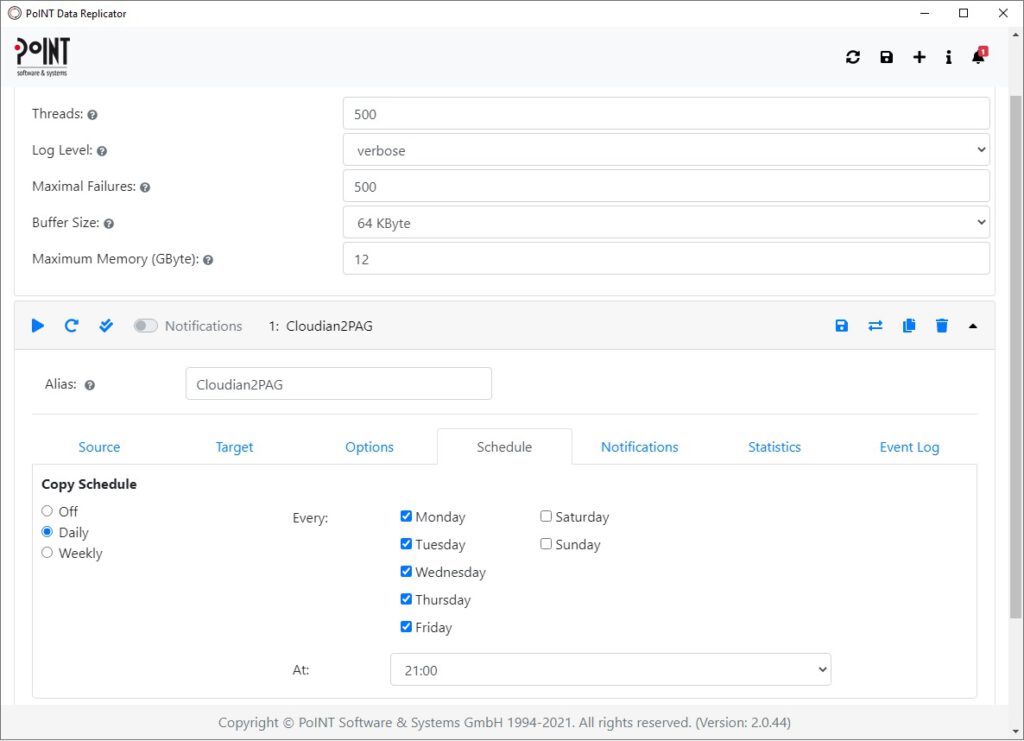Data replication in the hybrid cloud
More and more companies are relying on a mix of different cloud solutions and on-premises S3 storage for backing up large data volumes. This creates flexibility with optimized costs for the storage infrastructure. In such a hybrid cloud infrastructure, data often has to be transferred from one storage to another – as quickly and as securely as possible. All directions of data transfer are conceivable:
- From local storage to the cloud:
Data transfer from on-premises storage systems to a cloud service provider is currently the most common use case in this context. Cloud offerings are often a cost-effective and flexible alternative to investing in storage hardware. - Between two cloud providers:
In most cases, it is cost reasons that prompt companies to switch cloud providers, or to selectively migrate certain data sets – for example, to store them in a less expensive storage class. - From the cloud to on-prem storage systems:
In the field of machine learning, for example, the collected data is often not required immediately for evaluation, but is initially stored on low-cost cloud storage. Later, when the data is evaluated, it is migrated back to on-prem storage to avoid high transfer costs. - Migrating legacy file systems to object storage:
With increasing data growth, in many cases file-based data storage is reaching its limits. Here, it makes sense to transfer unstructured data from legacy file systems to modern object storage.
Companies should create a high degree of flexibility for data management in the hybrid cloud. Accordingly, they rely on powerful software solutions to move the large volumes of data between storage resources.
Replication and backup for cloud and object storage
The topics of data security and backup can also be discussed in this context. To prevent the loss of valuable data, the data on object and cloud storage should be backed up, too. The constant threat of cybercrime to important company data increases awareness that even the highly available and fail-safe S3 storage systems do not provide a security guarantee for the data. In our blog article “Preventing data loss: Data replication for object storage”, you can read why you should protect your object storage with a backup – and how to do so both cost-effectively and reliably.
Automated migration and replication with PoINT Data Replicator
A suitable software ensures seamless migration of data between storage resources. It should also enable automated replication to an independent backup medium and seamless access to the replicated data via the standardized S3 interface.
PoINT Data Replicator is a versatile and high-performance software solution for data replication to S3 storage – regardless of whether it is on-premises or cloud storage:
- S3-to-S3 Object Replication:
After automated data migration between different object stores, the data can be accessed seamlessly via the standardized S3 REST API. - File-to-Object Replication:
This feature enables the replacement of legacy file systems. The original file path is used as the object key, so that a standard S3 browser displays the original directory structure after replication.
Thus, PoINT Data Replicator supports you in replication and migration as well as in backup of your data to S3-enabled storage systems. For continuous backup PoINT Data Replicator uses bucket notification via Kafka or SQS. The integrated scheduler also enables a scheduled backup.

To replicate data between different storage systems as required, you can also trigger replication manually. PoINT Data Replicator replicates all metadata, optionally also object locks. The replication process is logged in a comprehensive event logging.
Conclusion
If you rely on hybrid cloud infrastructures for storing large amounts of data, you need a reliable backup and replication solution:
- for the additional backup of data on an independent storage medium,
- for the efficient and flexible use of available resources.
With a vendor-independent software solution for backup, replication and migration, you maintain flexibility while increasing data security.

